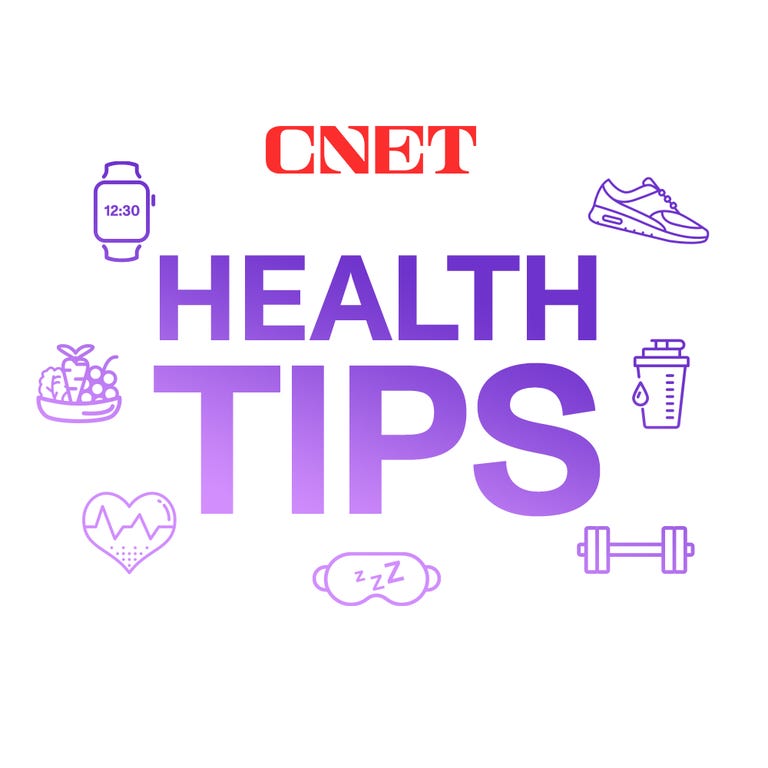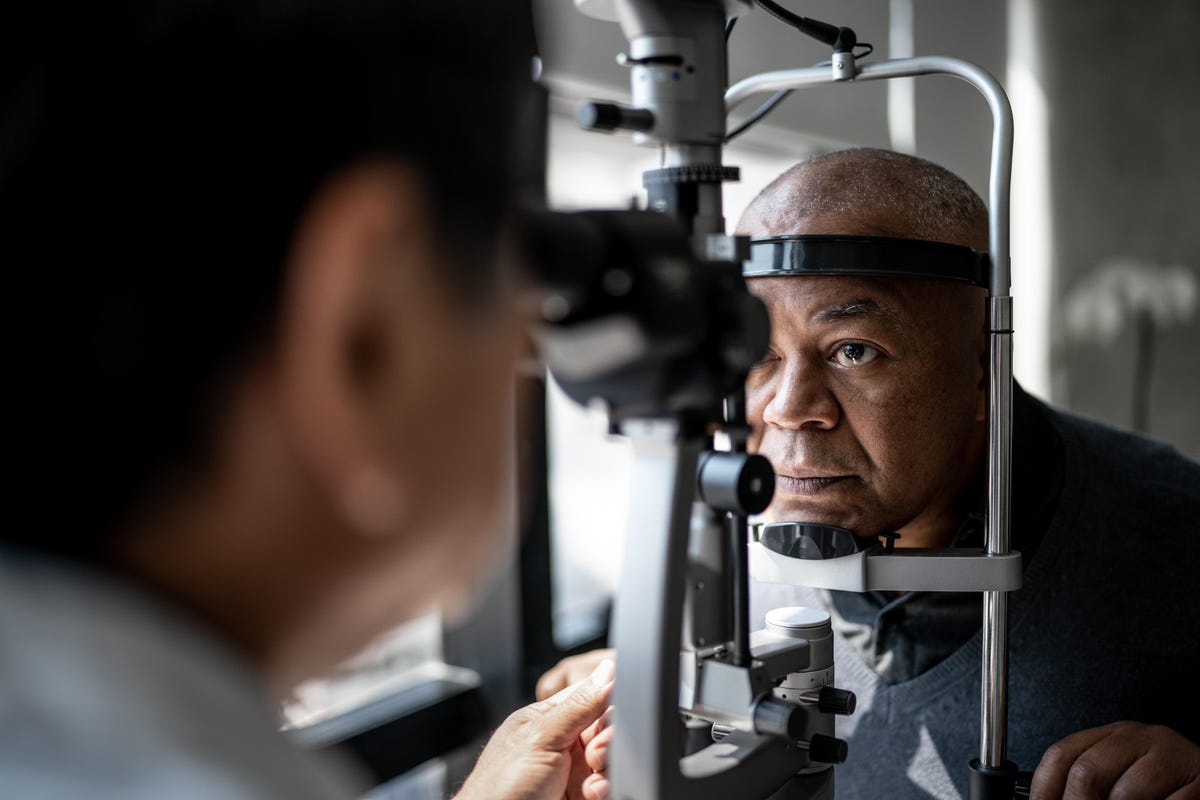Your eyes do more than take in the information around you. They can reflect what’s inside, too.
In fact, our eyes have the ability to reveal things about our health that might otherwise fly under the radar, including blood pressure, whether you have diabetes and if you have a genetic health condition. This makes staying on top of regular eye exams all the more important, as your eye doctor will have a window seat to some measures of health you may be missing.
Especially as we age, when some changes to vision can be expected, it’s important to stay on top of eye health. Here’s a closer look at which health conditions the eye can give you a glimpse of, sometimes before you even notice symptoms.
Read more: ‘Excessive’ Screen Time Costs Billions, Report Says
Heart disease
According to the American Academy of Ophthalmology, the eye is the only place a doctor can see blood vessels in “live action” without an invasive procedure. This means that evidence of high blood pressure (which often has no symptoms), high cholesterol, stroke and other health conditions linked to heart health may be first seen by your eye doctor.

The AAO pointed to 2021 research published in The Lancet that found decreased blood flow from heart disease (ischemia) may cause damage to the retina, which can be seen on retinal scans. Heart disease is the No. 1 killer in the US, and the earlier it’s detected, the better.
If you aren’t already offered a retinal scan as part of your eye exam, ask your doctor for one.
High blood pressure
High blood pressure not only leads to heart problems or heart disease, it can also raise the risk of some conditions of the eye, including glaucoma and macular degeneration, according to the AOA. And it may be visible during an eye exam due to the way it affects blood vessels.
Diabetes
Diabetes is very common (about 1 in 10 Americans have it) and symptoms of it are often seen in the eye. Diabetes can lead to partial vision loss, double the risk of glaucoma, increase the risk of cataracts and lead to diabetic retinopathy.
Diabetic retinopathy is when high blood sugar levels cause blood vessels in the eye to swell, leak or close. As of 2017, diabetic retinopathy was the leading cause of blindness among adults in developed countries, according to the American Diabetes Association. For this reason, people with diabetes are typically recommended for retinal scans because of the way it causes damage to the retina.
Symptoms of diabetic retinopathy (and signs you should get to your doctor ASAP) include blurred vision, a sudden, large amount of “eye floaters,” blurred or fluctuating vision and dark or empty areas of vision. If you have diabetes, you should be offered a dilated eye exam to look at your retina and check for retinopathy.

High cholesterol
Colored deposits around the cornea of the eye may mean high cholesterol, especially if the person is younger than age 40, according to the AOA. It can also show up in the retina as blood vessel deposits, and yellow bumps around the eye.
If you have these eye symptoms, you should get seen right away, as they typically can lead to more serious health conditions or a stroke.
Read more: Best Over-the-Counter Eye Drops
Autoimmune and genetic conditions
Rheumatoid arthritis, lupus, multiple sclerosis and other autoimmune disorders can affect the eye. About 30% of people with lupus will have dry eye, according to the AOA. Many people with MS will develop vision problems, and it may be one of the earlier symptoms of the disease.
People with Parkinsons often have ocular tremors as one of their first symptoms, according to the AARP.
People with sickle cell disease, a blood disorder, may also develop problems in the eye or with their vision, including retinal damage. According to the American Society of Retina Specialists, annual screenings for sickle cell retinopathy are recommended for people who’ve been diagnosed, starting at age 10.
While eye problems may not always be the first symptom of a genetic or autoimmune disorder, catching them early may help decrease the risk of damage to the eye or more serious outcomes.
Vitamin deficiency
According to the World Health Organization, night blindness (not being able to see in low light) is one of the first signs of a vitamin A deficiency. And while there are a ton of reasons for experiencing dry eyes, a vitamin A deficiency can also cause very dry eyes.
Beyond vitamin A, your body needs a well-balanced diet full of vitamins and other nutrients to thrive — including your eyes. Foods rich in zinc, vitamin E and vitamin C may all benefit vision health.
As the Cleveland Clinic notes, vitamin A deficiency is less common in the US, because we tend to get enough of it from our food, but it can affect people with liver disorders or those whose bodies have a hard time absorbing vitamins. If you’re deficient in any vitamin or mineral, you should talk to your doctor about a supplement that makes sense for your needs.
Read more: The 12 Best Foods for Healthy Eyes
Too much screen time
While you won’t see it on a retinal scan, staring at screens all day won’t do great things for your eyes. There’s not evidence directly linking blue light from screens to eye damage or health, but it has been found to disrupt your sleep and give you symptoms of eye strain, which includes dry eyes, headaches and more.
If you go to the doctor with symptoms of eye strain or tired eyes from looking at a computer all day, they may suggest you take more breaks away from your desk or that you start practicing the 20-20-20 rule: every 20 minutes, look at something about 20 feet in the distance for 20 seconds. This will help your eyes shift their focus and give them a breather (and more blinks).
Read more: Best Places to Buy Glasses Online for 2023
Other health conditions
Viruses and bacterial infections can also show up in the eye, causing conjunctivitis (pink eye). Pink eye can be brought on from a respiratory virus that causes symptoms of a cold, and it can even be brought on by a sexually transmitted infection like chlamydia or gonorrhea.
Sometimes, infections can show up in the cornea. Herpes simplex virus 1, the virus that usually causes cold sores on the mouth, is the most common cause of corneal infections, according to the US Centers for Disease Control and Prevention. Because eye infections can be serious and even cause vision loss in extreme cases, it’s important to go in for treatment, whatever the cause.
It’s possible that an eye doctor may also be able to see signs of more urgent, severe health problems including tumors or aneurysm, according to the AOA and Versant Health. Increased pressure near the back of the eye can cause changes to the optic nerve, which may be seen by a doctor, the agency said. If there are subtle signs of something detected behind the eye (there won’t always be), your eye doctor will refer you to another specialist.
Manage your health by managing your eyes
While some health effects that show up in the eye can’t be controlled, like in the case of autoimmune and genetic conditions, you can’t go wrong with simple lifestyle tweaks like eating a generally healthy diet — which also benefits vision — and getting regular physical activity. Maintaining regular activity and eating nutritious foods most days is especially important to control health conditions that can be preventable or managed, like high blood pressure, type 2 diabetes and high cholesterol.
It’s also important to stay on top of your annual eye exams and recommended retinal screenings, if you’re at higher risk of eye damage from a common, chronic health condition like diabetes or high blood pressure. Because your eyes are a part of your body — and a crucial one, at that — pay attention when they show you something about your health.

